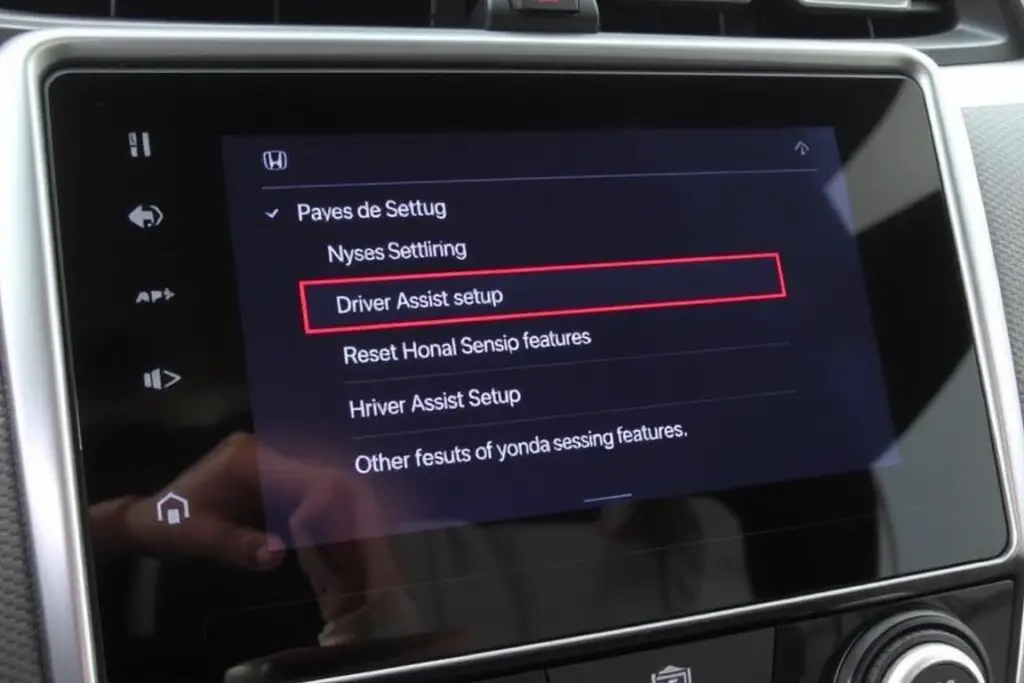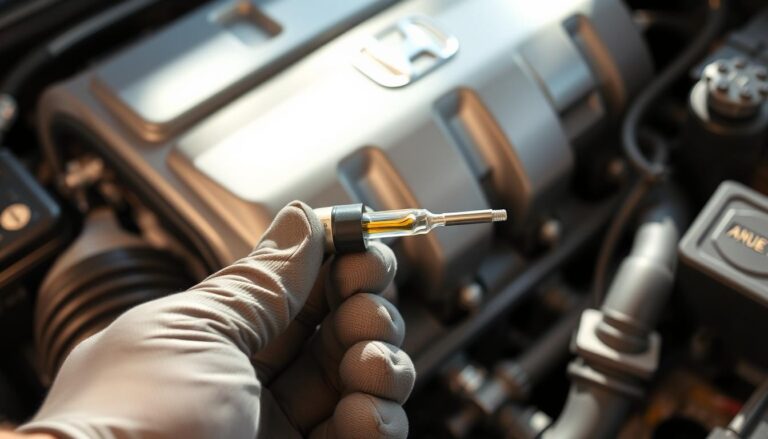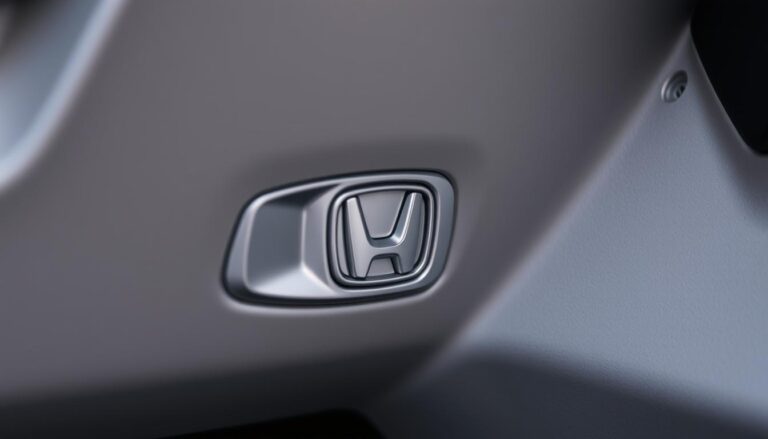Honda Sensing technology enhances your driving experience with advanced safety features, but occasionally these systems need to be reset. Whether you’re experiencing error messages, inconsistent performance, or have just replaced your windshield, knowing how to reset Honda Sensing can save you time and potentially an unnecessary trip to the dealership. This comprehensive guide walks you through various reset methods for different Honda models and helps you determine when professional assistance is necessary.
Understanding Honda Sensing Technology
Before diving into reset procedures, it’s important to understand what Honda Sensing actually is. This advanced suite of safety and driver-assistive technologies uses a combination of radar sensors and cameras to provide features that help make your driving experience safer and more convenient.
Key Honda Sensing Features
- Collision Mitigation Braking System (CMBS): Helps brake when a potential frontal collision is detected
- Road Departure Mitigation System (RDM): Assists in keeping your vehicle on the road
- Adaptive Cruise Control (ACC): Maintains a set following distance behind detected vehicles
- Lane Keeping Assist System (LKAS): Helps keep your vehicle centered in a detected lane
- Traffic Sign Recognition (TSR): Recognizes and displays traffic sign information
Common Reasons for Honda Sensing Malfunctions
Honda Sensing systems may require resetting due to various issues:
Sensor Obstructions
Dirt, snow, mud, or debris blocking sensors or cameras can cause system errors.
Software Glitches
Temporary system errors or software bugs may cause unexpected behavior.
Calibration Issues
After windshield replacement or front-end repairs, recalibration may be needed.
How to Reset Honda Sensing: Different Methods
Depending on the nature of your Honda Sensing issue, there are several reset methods you can try, ranging from simple to more complex procedures.
Method 1: Soft Reset Procedure
The simplest approach is performing a soft reset, which often resolves minor glitches:
- Pull over to a safe location and turn off your vehicle completely
- Wait approximately 1-2 minutes to allow the system to fully power down
- Restart your vehicle and check if the Honda Sensing warning lights have cleared
- Take a short test drive to see if the system functions properly
A soft reset is often effective for temporary glitches and should be your first troubleshooting step before trying more complex methods.
Method 2: Battery Disconnection Reset
For more persistent issues, disconnecting the battery can perform a more thorough reset:
- Ensure your vehicle is completely turned off and in Park
- Open the hood and locate the battery
- Disconnect the negative (black) battery terminal first
- Wait 15-20 minutes to ensure complete system discharge
- Reconnect the negative terminal, ensuring it’s securely fastened
- Start the vehicle and check if Honda Sensing is functioning properly

Disconnecting your battery will reset all electrical systems, including your radio presets, clock, and other personalized settings. You may need to reconfigure these after reconnecting.
Method 3: Using Dashboard Controls and Settings
Many Honda models allow you to reset specific Honda Sensing features through the dashboard controls:
- Turn on your vehicle
- Navigate to the Settings menu on your infotainment screen
- Select “Vehicle Settings” or “Driver Assist Setup”
- Find the Honda Sensing settings or the specific feature you want to reset
- Turn the feature off, wait 10 seconds, then turn it back on
- Exit the menu and test the system

Method 4: LKAS and ACC Button Reset
For specific issues with Lane Keeping Assist or Adaptive Cruise Control:
- Locate the MAIN button on your steering wheel
- Press and hold the MAIN button for approximately 5 seconds to turn off LKAS
- Wait 10 seconds
- Press the MAIN button again to reactivate the system
- For ACC issues, follow the same procedure using the ACC button
Model-Specific Honda Sensing Reset Instructions
While the general reset procedures work across most Honda vehicles, there are some model-specific considerations to keep in mind:
| Honda Model | Sensor Locations | Special Reset Notes |
| Civic (2016+) | Radar: Driver’s side of lower bumper Camera: Behind windshield near rearview mirror | Access settings via “Home” → “Settings” → “Vehicle” → “Driver Assist System Setup” |
| Accord (2018+) | Radar: Center of lower bumper Camera: Behind windshield near rearview mirror | Use physical buttons on steering wheel for quicker LKAS reset |
| CR-V (2017+) | Radar: Below badge on front fascia Camera: Behind windshield near rearview mirror | May require longer wait time (30 sec) between turning features off and on |
| Pilot (2016+) | Radar: Behind badge on front fascia Camera: Behind windshield near rearview mirror | Access via “Settings” → “Vehicle Settings” → “Driver Assist System Setup” |

“Always consult your specific Honda model’s owner manual for the most accurate information about your vehicle’s Honda Sensing system and reset procedures.”
Troubleshooting Persistent Honda Sensing Issues
If you’ve tried the reset methods above and are still experiencing problems with your Honda Sensing system, consider these additional troubleshooting steps:
Common Fixes
- Clean all sensors and cameras thoroughly
- Check for and clear any obstructions (snow, mud, bugs)
- Ensure windshield is clean in front of camera
- Verify battery is in good condition and fully charged
- Check for software updates at your Honda dealer
When Professional Help Is Needed
- Persistent error messages after multiple reset attempts
- Physical damage to sensors or cameras
- Issues following windshield replacement
- Multiple Honda Sensing features failing simultaneously
- Warning lights that won’t clear after reset procedures
Checking for Sensor Obstructions
One of the most common causes of Honda Sensing issues is sensor obstruction:
- Inspect the front grille area where the radar sensor is located
- Clean the area around the Honda emblem (where applicable)
- Check the windshield area in front of the rearview mirror
- Ensure all sensors are free from dirt, snow, ice, or debris
- Use a soft, damp cloth to gently clean sensors

Important: After cleaning sensors, perform a soft reset by turning the vehicle off and on to allow the system to recalibrate.
When to Seek Professional Honda Service
While many Honda Sensing issues can be resolved with the reset procedures outlined above, there are situations where professional service is necessary:
Professional Calibration Requirements
In these situations, specialized equipment is required to properly calibrate the Honda Sensing system:
- After windshield replacement – The forward-facing camera requires precise calibration
- Following front-end collision repair – Radar sensors may need realignment
- When multiple reset attempts fail – May indicate deeper system issues
- After airbag deployment – Safety systems need comprehensive inspection
- When “Sensing System Problem” warning persists – May require diagnostic equipment
What to Expect During Professional Honda Sensing Service
When you take your vehicle to an authorized Honda service center for Honda Sensing issues, the technicians will:
- Perform a comprehensive diagnostic scan to identify specific error codes
- Inspect all sensors and cameras for physical damage or misalignment
- Check for and install any available software updates
- Use specialized equipment to calibrate sensors if necessary
- Test all Honda Sensing features to ensure proper functionality
- Provide documentation of the service performed

Maintaining Your Honda Sensing System
Proper maintenance can prevent many Honda Sensing issues from occurring in the first place:
Regular Cleaning
Keep sensors and cameras clean, especially during winter or muddy conditions.
Software Updates
Check for and install Honda Sensing software updates during regular service visits.
Periodic Inspection
Have sensors inspected during regular maintenance to catch issues early.
How often should I clean my Honda Sensing sensors?
It’s recommended to check and clean your Honda Sensing sensors monthly and after driving in severe weather conditions (heavy snow, mud, rain). Pay special attention to the front grille area and windshield near the rearview mirror.
Will a car wash damage my Honda Sensing system?
Standard car washes are generally safe for Honda Sensing components. However, avoid using high-pressure washers directly on sensor areas, as excessive force could potentially damage or misalign sensitive components.
How do I know if my Honda Sensing needs calibration?
Signs that your system may need professional calibration include persistent warning messages, inconsistent operation of features like LKAS or ACC, or false collision warnings. Calibration is also required after windshield replacement or front-end repairs.
Conclusion: Keeping Your Honda Sensing System Running Smoothly
Honda Sensing technology provides valuable safety and convenience features that enhance your driving experience. When issues arise, the reset procedures outlined in this guide can often resolve minor glitches and get your system back to normal operation. Remember to keep sensors clean, stay aware of warning messages, and seek professional help when necessary.
For persistent problems, especially after windshield replacement or collision repairs, professional calibration is essential to ensure your Honda Sensing system functions correctly. Regular maintenance and prompt attention to warning messages will help keep your Honda’s advanced safety features working properly for years to come.


